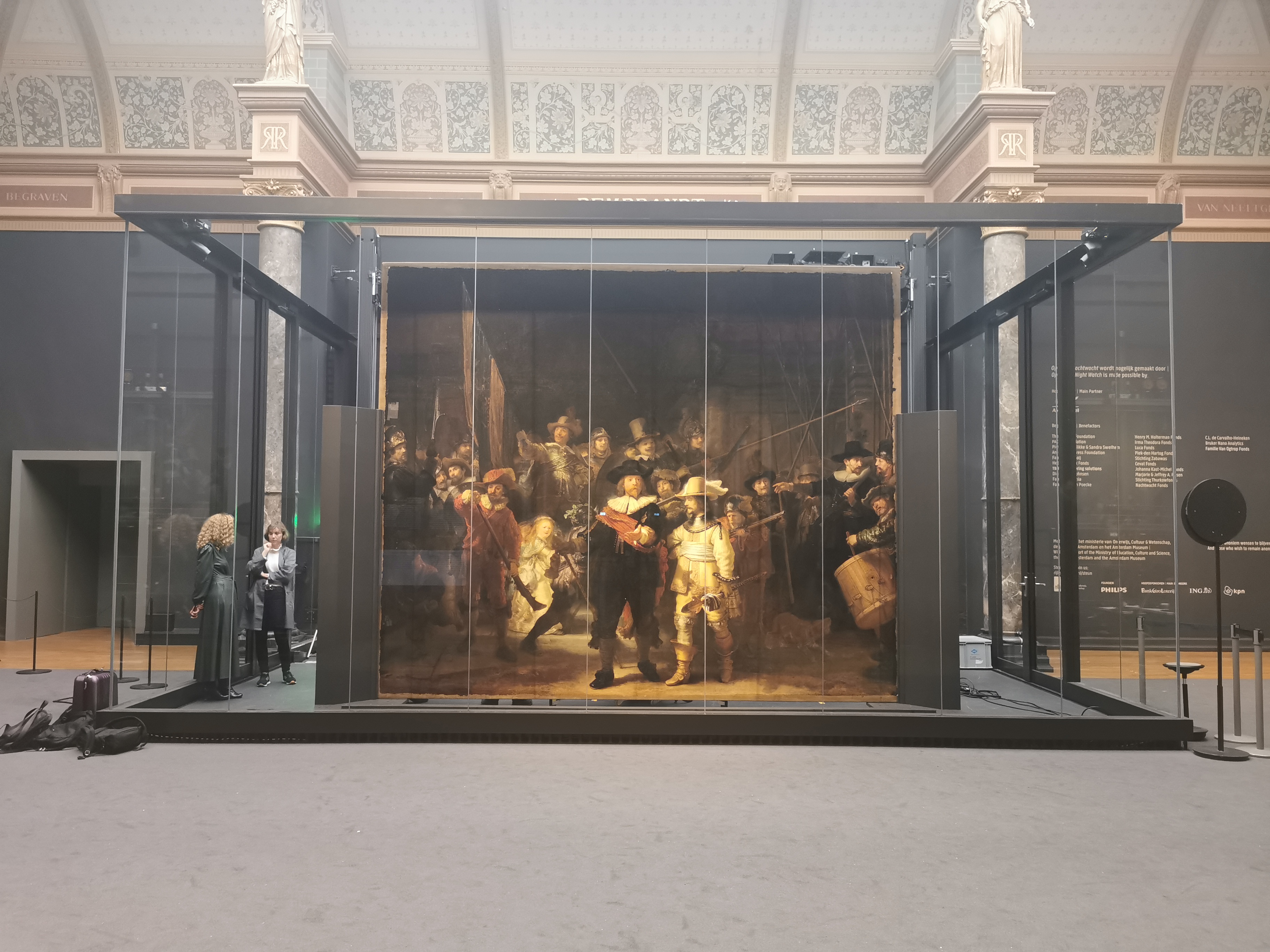Looking between the hidden layers of The Night Watch
During Operation Night Watch, Holland's most famous painting has been extensively researched, giving the restorers all the insights they need for the next restoration. There is one more hidden feature left, that they do need to take into account: the structure of the canvas and the condition of the different canvas layers. TU Delft researchers Andrei Anisimov, Roger Groves and Nan Tao used their special research equipment in the Rijksmuseum last week, to make the invisible structure of The Night Watch visible.
Additional canvases can be added to the back of a painting to strengthen it. In the past, these lining canvasseswere glued to the back of a painting using a mixture of beeswax and resin. The lining canvas of The Night Watch was attached to Rembrandt’s masterpiece in 1975, following the infamous knife attack. Shearography analysis will be carried out to increase understanding of the extent to which the 46-year-old support canvas is affixed to the original 17th-century canvas on which Rembrandt painted The Night Watch, and to determine whether the bonding between the two canvases is still adequate. Shearography is an optical measurement technique that can measure deformations at the micro- and nano scale using laser illumination and a specific camera. By briefly heating the painting from the front or the back by only one or two degrees Celsius, and then scanning them with a special shearography instrument, researcher Andrei Anisimov can locate the loose and weak spots of paintings. Andrei Anisimov: “It is an honour to research the Night Watch and thus contribute to its successful restoration."
Captain's pants
The main point of interest is the pants of Captain Frans Banninck Cocq, in the foreground of the painting. In 1975, that part of the painting was severely damaged by a confused man with a knife. The Night Watch was subsequently restored to its former glory by restorers, by attaching a lining canvas behind the original canvas. Anisimov,Groves and Tao will therefore focus their research on the status of this part of the painting and compare it with other, undamaged parts of the Night Watch. The first inspection will be done from the back of the painting, to minimise the risks to affect the paint pigments.
Wall painting of St. Christopher in a church in Zeeland
This year, Anisimov and his colleagues already used this shearography instrument to inspect the 15th-century wall painting in the picturesque village of Nisse, Zeeland. They discovered that shearography can reveal delaminations in more detail and exclude the human factor when compared with traditional tapping tests.
Shipyard
Normally, this research set-up is not found in the museum, but for example in a shipyard or at an aerospace company. There, new materials such as composites for the hulls of ships are put to the test. Thanks to the method, the researchers can detect manufacturing defects and the location of damage in these materials without having to saw the material into pieces. In that research, Anisimov and his colleagues aim to broaden the application of shearography inspection to complex materials and shapes as curved parts of aeroplanes or thick marine composite materials.
More information
Publication on similar work in Nisse:
V. Gatto, A. G. Anisimov, W. Lettinga, N. Tao, M. Lantman, B. Crijns, R. M. Groves "Application of shearography and the percussion method for the structural inspection of wall paintings: a case study of St. Christopher in Maria Church, Nisse", Proc. SPIE 11784, Optics for Arts, Architecture, and Archaeology VIII, 117840K (8 July 2021); https://doi.org/10.1117/12.2591911
Contact
Andrei Anisimov, A.G.Anisimov@tudelft.nl
Dimmy van Ruiten, press officer TU Delft, D.M.vanruiten@tudelft.nl, 015 278 1588


